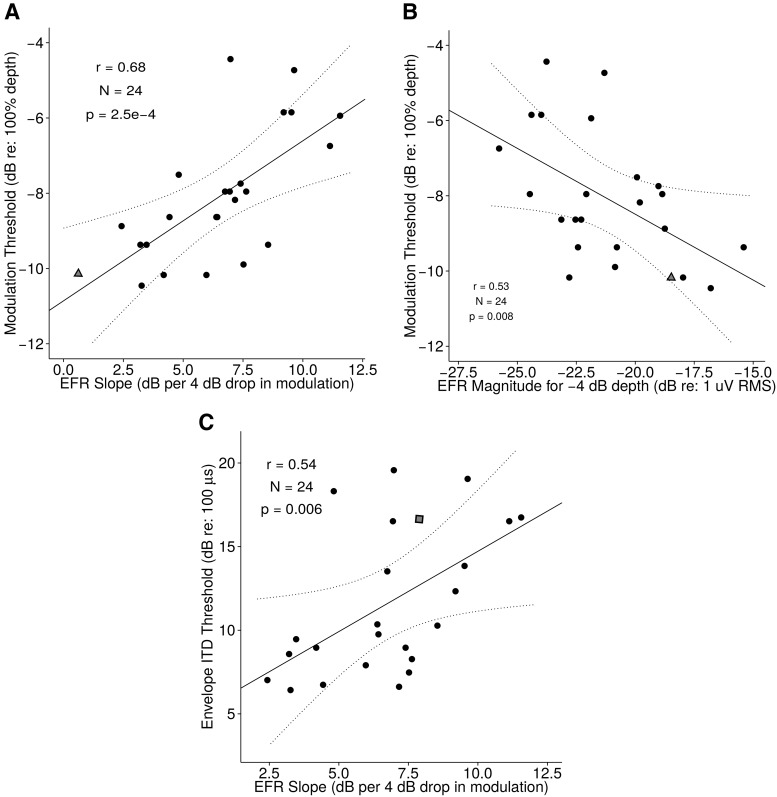Figure 6.
Relationship between EFR and behavioral measures of temporal sensitivity. A, AM thresholds versus EFR slope. The rate at which the EFR drops with decreasing modulation correlates strongly with perceptual modulation sensitivity. B, AM thresholds versus absolute EFR magnitude at −4 dB modulation depth (the shallowest depth at which 90% of the subjects showed a clear EFR response distinguishable from the noise floor). Although the absolute EFR magnitude at a given modulation depth correlates with perceptual ability, the correlation is not as strong as the correlation between EFR slope and perception. C, Envelope ITD threshold versus EFR slope. Subcortical temporal coding fidelity as measured by EFR slope also can explain a considerable amount of the variance in envelope ITD thresholds. The subject denoted by the triangle symbol in A and B was unavailable for envelope ITD threshold measurement, and the subject denoted by the square symbol in C was unavailable for modulation threshold measurement.

